Commercial mango farming is a very old and profitable business idea. Mango is a very popular fruit throughout the world, especially in India and some other south Asian countries.
Mango is actually a stone fruit produced from numerous species of tropical trees belonging to the flowering plant genus Mangifera. And these trees are cultivated mostly for their edible fruit.
Mangoes are native to South Asia, from where the ‘common mango’ or ‘Indian mango’ (magnifera indica) has been distributed worldwide to become one of the most widely cultivated fruits in the tropics.
Today, there are several hundred varieties/cultivars of mango available throughout the world. And the mango fruit varies in size, shape, taste and skin color depending on the cultivar.
Mango tree is the national tree of Bangladesh. And the fruit is the national fruit of India. Flesh color of the fruit may vary from pale, yellow, gold or orange depending upon the cultivar.
Mango trees are large and can grow up to 130 feet tall depending on the variety. These trees are long lived, as some specimens still fruit after 300 years.
Leaves of these trees are evergreen. The young leaves are orange-pink in coloration, and rapidly change to a dark, glossy red, and then dark green as they mature.
Mangoes have actually been cultivated in many South Asian countries (especially in India) for thousands of years and reached Southeast Asia between the fifth and fourth centuries BCE.
Today, mango plants are available and cultivated in many different countries throughout the world. It is mainly cultivated in the most frost-free tropical and warmer subtropical climates.
India is the world’s largest mango producer. And almost half of the word’s total mangoes are cultivated in India alone. And the second largest country is China.[1]
However, commercial mango farming is a very old business. And this business is among the very old traditional business for the rural people. You can also start this business, even if you are a beginner.
Mango Nutrition And Health Benefits
Mango is called as the ‘king of fruits’ in some parts of the world. It is a native fruit of India and Southeast Asia and has been cultivated for thousands years.
Mango is a very popular and common fruit in many countries. It has very good taste, it is delicious and it is also very nutritious.
Many studies link mango and it’s nutrients to health benefits, such as improved immunity, digestive health and eyesight, as well as a lower risk of certain cancers.
Nutritional Value of Mango
A raw mango is around 84% water, 1% protein, 15% carbohydrates and negligible amount of fat. The energy value per 100 g (3.5 oz) serving of the common mango is 250 kJ (60 kcal). Fresh mango contains only vitamin C and folate in significant amounts of the Daily Value as 44% and 11%, respectively (table).
According to healthline, one cup (165 grams) of sliced mango provides:
- Calories: 99
- Protein: 1.4 grams
- Carbs: 24.7 grams
- Fat: 0.6 grams
- Dietary fiber: 2.6 grams
- Vitamin C: 67% of the Reference Daily Intake (RDI)
- Copper: 20% of the RDI
- Folate: 18% of the RDI
- Vitamin B6: 11.6% of the RDI
- Vitamin A: 10% of the RDI
- Vitamin E: 9.7% of the RDI
- Vitamin B5: 6.5% of the RDI
- Vitamin K: 6% of the RDI
- Niacin: 7% of the RDI
- Potassium: 6% of the RDI
- Riboflavin: 5% of the RDI
- Manganese: 4.5% of the RDI
- Thiamine: 4% of the RDI
- Magnesium: 4% of the RDI
So, mango is very nutritious. It is low in calories but high in many essential nutrients particularly vitamin C, which aids immunity, iron absorption and growth and repair.
Health Benefits of Consuming Mangoes
Consuming mangoes has many health benefits. Here we are trying to describe about the top health benefits of consuming mangoes.
- Mango is packed with different type of polyphenols (including mangiferin which is especially powerful). Polyphenols are plant compounds that function as antioxidants inside the body.
- Consuming mango help to boost immunity. Because it is a good source of folate, several B vitamins, as well as vitamins A, C, K and E. All these nutrients help to boost immunity.
- Mango is a good source of potassium, magnesium and the antioxidant mangiferin. And all these nutrients support healthy heart function.
- Mango has digestive enzymes, water, dietary fiber and other compounds that aid different aspects of digestive health.
- Lutein, zeaxanthin and Vitamin A support eye health. Lutein and zeaxanthin may protect from the sun, while a lack of vitamin A can create vision problems. Mango contain all these nutrients, that’s why consuming mangoes is good for eye health.
- Mango provides vitamin A, which promotes healthy hair.
- Consuming mango is also good for your skin. Because it contains vitamin C which gives your skin it’s elasticity and prevents sagging and wrinkling.
- Mango polyphenols may fight oxidative stress, which is linked to colon, lung, prostate, breast and bone cancers.
- Most importantly, mango is delicious and you can enjoy it in many different ways.
Advantages of Mango Farming Business
Commercial mango farming is a very common and popular business. It is very easy and even the beginners can also start this business.
Commercial production is a great way for making profits. Here we are trying to describe more about the top advantages/benefits of mango farming business.
- It’s a very old business. So, you don’t have to worry much about starting it. You will be able to find many experienced farmer within your area to learn practically.
- Commercial mango production is very profitable, and you will be able to make good profits from this business.
- It’s a very old and established business. So, you don’t have to worry much about this business.
- Mango plants grow easily and it’s very easy to take care of them.
- Both price and demand of mangoes are high.
- Marketing mangoes is very easy. Because this fruit already has good market demand. You will be able to sell your products in the local market.
- Commercial mango production is profitable. So, it can be a good employment source for the unemployed people, especially for the educated young people.
- Commercial mango farming doesn’t require high investment, but it will require long time (several years). But once the trees are established, then you will get fruits continuously for many years.
- Mango fruits is very tasty and nutritious. And consuming mangoes on a regular basis has many health benefits. You can enjoy fresh mangoes if you start your own mango farming business.

How To Start Mango Farming Business?
Mango plants are very strong and hardy, and caring them is very easy and simple. You can care them easily, even if you are a beginner.
You can easily start this business. Here we are trying to describe more information about starting and operating this business from planting, caring, to harvesting and marketing.
Step 1. Select Location
First of all, you have to select a very good location for starting your mango farming business. Although you can use your existing land for growing mango trees.
Actually, mango trees can be grown in a variety of soil types. But deep soil without any hard pan up to depth of 4 feet is required for mango cultivation. pH of the soil should be less than 8.5%. And mango plants don’t grow in salty soil.
Step 2. Prepare Soil
Preparing the soil perfectly is very important for growing mango plants. Do ploughing, cross ploughing of land and then level the land.
And then prepare the land in such way that water stagnation should not occurred in field. Take one deeper ploughing after levelling, and then divide lands in blocks.
Try to add as much organic fertilizers as you can during preparing the land. Spacing is varied from place to place.
Step 3. Climate Requirements For Mango Farming
Mango plants are very strong and hardy, and they can grow in many different areas around the world. They generally require less maintenance than other commercial fruit plants.
So, mango plants can be grown anywhere, where there is not much humidity in the atmosphere along with good rainfall and dry atmosphere. But low temperature is essential at the time of flowering.
Hot and temperate climatic conditions are the main habitat of the mango tree. Temperature ranging between 24°C and 30°C is considered as the best suitable for mango cultivation (for getting increased number of mangoes).
Planting can be done any time if you have enough irrigation facilities. But the plants are planted in the month of July to August in the rainfed areas.
Step 4. Choose Variety/Cultivars
There are many different varieties of mangoes available throughout the world. You should choose the right breed for your business depending on it’s availability, price and market demand.
Some common and popular mango varieties in India are Amrapai, Arka Arjun, Arka Puneet, Arka Anmol, Dusheri, Langra, Alphonso, Gangian Sandhuri, Mallika, Ratna, Sindhu, Manjeera, Bombay Green, Dashahari, Kesar, Himsagar, Chausa, Neelaum etc.
Step 5. Purchase Plants
Mango plants are easily available. You will be able to easily purchase plants from any of your nearest nurseries. Today, there are some nurseries available with online presence. So, you can also consider ordering online.
Step 6. Planting
The mango trees are mainly propagated by the grafting method (such as veneer grafting, arching grafting, epicotyl grafting etc.) in commercial production business.
Keeping adequate distance between plants is very important. Use a distance of 9m x 9m for grafted varieties and plant them in square system.
Dig pits at the distance mentioned above, at least one month earlier before planting. Expose them to sun and mix organic and chemical fertilizers.
You can start planting the plants when the land become ready. Try to plant during afternoon, and choosing the rainy days for planting is a very good idea. Water the plants immediately after planting, if the soil is dry.
Step 7. Caring
Mango plants are very strong and hardy. So, they require relatively less caring, and the caring process is relatively easy. Here we are trying to describe more information about caring mango plants.
Fertilizing
Providing fertilizers is very important for good growth of the plants and also for better production. Follow the chart below.[2]
| Age of the plants (year) | Decomposed cow dung (in kg) | Nitrogen (in grams) | SSP (in grams) | MOP (in grams0 |
| 1-3 | 5-20 | 100-200 | 250-500 | 175-350 |
| 4-6 | 25 | 200-400 | 500-700 | 350-700 |
| 7-9 | 60-90 | 400-500 | 750-1000 | 700-1000 |
| 10 and above | 100 | 500 | 1000 | 1000 |
Watering
Adequate watering is also very important for good growth of the plants. Exact amount and interval of irrigation depend upon many factors (such as soil type, climate and source of irrigation).
Provide light and frequent irrigation to the young plants. Light irrigation always give good result as compared to flood irrigation.
Apply irrigation at interval of 5-7 days during summer. And increase irrigation interval to 25-30 days during winter. No irrigation required during rainy season.
Bearing trees require irrigation during fruit development period at interval of 10 to 12 days. Light irrigation is a must before and after applying fertilizers.
Mulching
Mulching not only helps to retain moisture into the soil, but also helps to prevent weed growth. So, mulching is a must. You can use either polythene or organic materials as mulch.
Weeding
Weed controlling is also very important, because weeds consume nutrients from soil and the mango plants suffer.
Weeding and earthing up should be done around newly planted crop. Inter-crop can be taken till plant gets well acquainted to surrounding atmosphere up to plant start bearing.
Depending upon variety, it can take between 5 and 6 years to start bearing fruits commercially (some varieties also start bearing fruit after 1 year, but commercial production takes time).
Inter-cropping helps to minimize weed control, and at the same time you can utilize your space for making extra money.
Leguminous crop like mash, moong, gram and lentil can be grown as inter-crop. Also crop like onion, tomato, radish, beans, cauliflower, cabbage are useful for inter-cropping. Avoid Bajra, maize and sugarcane as inter-cropped.
Step 8. Control Pests And Diseases
Like many other commercial crops, the mango plants are also susceptible to many diseases and pests. Here we are trying to describe more about these pests and diseases and their preventing methods.
Mango Fruit Fly
It is a serious pest of mango. Females lay eggs below epidermis of young fruits, later on maggots feed on pulp afterwards fruits starts rotting and get drop.
Destroy the infected fruits away from field. Hang traps of 100ml emulsion of methyl Engenol 0.1% during fruit development stage.
Start spraying of Chlorpyrifos 20EC@2ml/Ltr of water for three times with interval of 20days. Do this in the month of May.
Mango Hopper
Mango hopper infestation is observed mostly in February to March month when crop in flowering stage. If you observe infestion of these pests, then spray Cypermethrin 25EC @3ml or Deltamethrin 28EC@9ml or Fenvelarate20EC@5ml or Neembicidine 1000ppm@20ml in 10Ltr water on whole tree.
Mealy Bug
Mealy bug causes damage to crop by sucking sap from inflorescences, stem, leaves and shoot. Spray Acephate@2gm/Ltr or Spirotetramat@3ml/Ltr of water to control mealy bug.
Stem Borer
Stem borer is a serious pest of the mango crop. It create tunnel under bark and destroy the tree by feeding on internal tissue. Larva of stem borer excreta is observed outside of tunnel.
If you observe the infestation of stem borer, clean tunnel with hard wire and insert cotton swab dip in mixture of Kerosene and Chlorpyriphos in ratio of 50:50 and then close it with mud.
Anthracnose/Dieback
In this diseases, dark black or dark brown spots are observed on shoots. Some small, raise, dark spots are also observed on fruits.
Cut infested, dead portion and apply Bordo Paste on it to control this disease. If infestation observed in field take spray of Copper oxychloride@30gm/10Ltr on infected trees.
If Anthracnose observed on new flush. Spray with Thiophanate methyl@10gm or Carbendazim@10gm/10Ltr of water.
Black Tip
Black tip affected mangoes get abnormally elongated at tips along with pre-mature ripening of fruits. Spray Borax@6gm/ltr of water plus Copper Oxychloride@3gm/Ltr of water for three times with 10-15days interval, during flowering stage.
Powdery Mildew
Whitish powdery growth observed on inflorescence and the floral parts. In severe condition, they get drop. Also fruits, branches and floral part show dieback symptoms.
Spray 1.25kg wet able sulfur in 200litre of water. Do this before flowering, during flowering and after fruit set. Take second spray with interval of 10-15 days, if needed.
If infestation is observed in field, take spray of 178% Imidacloprid@3ml along with Hexaconzole@5ml/10Ltr water or Tridemorph@5ml or Carbendazim @10gm/10Ltr of water.
Step 9. Harvesting
You can start harvesting when the mangoes start changing color. Changing of fruit color is a sign of fruit maturity. It generally take 15 to 16 weeks after fruits set to get mature.
Pick each fruit with help of ladder or bamboo having sharp knife and having net to collect harvested fruits. Avoid falling of fruits on ground as it will damage fruits during storage.
After harvesting, do sorting and grading of mangoes according to their size, color and then packed in boxes. Place harvested fruits on polynet upside down.
Step 10. Marketing
Marketing mangoes is very easy and simple. You can easily sell your products in the local market. You can also consider selling to the commercial companies. Determine your marketing strategies before starting this business.
These are the common steps and ways for starting and operating a successful mango farming business. It’s really very easy and simple. Hope this guide has helped you! Good luck!

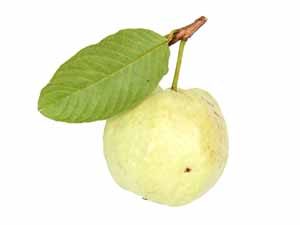

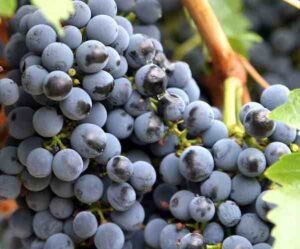
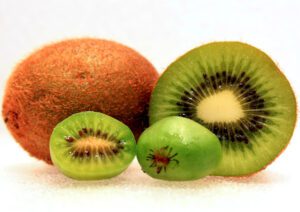
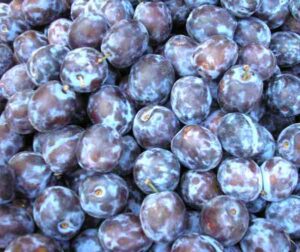
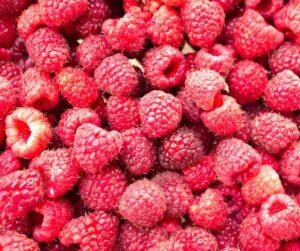
I love this side of farming ideas for beginners
Thanks for your honest opinion! Good luck!